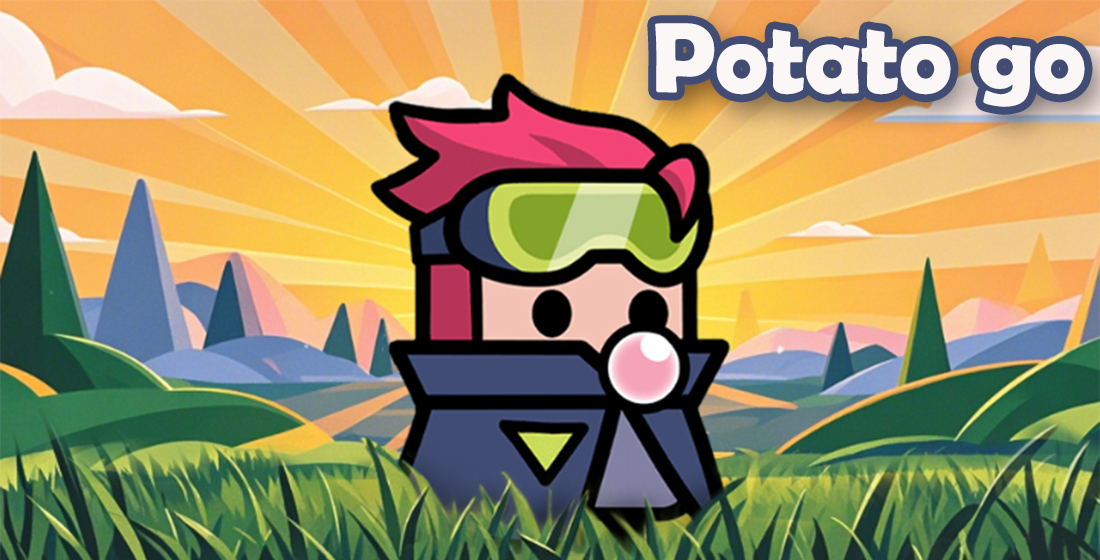Mastering Multiplayer Games: Why Turn-Based Strategy Games Are Dominating the Scene
Rise of Turn-Based Strategy in the Multiplayer Space
MULTIPLAYER GAMES continue to evolve as one of gaming's most engaging categories—blurring casual fun and competitive thrill, especially with the advent of strategic formats. In recent years, turn-based strategy games have experienced unprecedented growth, drawing players from both dedicated strategy communities and broader mobile gamers seeking meaningful, low-pressure playstyles.
A key aspect lies in the format's adaptability to different skill levels; you're never overwhelmed by split-second reactions or chaotic reflex challenges. Think chess, but on an adrenaline-controlled clock, with armies clashing across virtual battlefields—games like Clash of Clans' *Builder Base Level 8* offer just that blend of thoughtful pacing and escalating gameplay.
| Feature | Turn-based Game | Live multiplayer FPS/Action game |
| Timing demand | Paced | High intensity reflex |
| Skill learning curve | Modular progressions | Hard core |
| Device flexibility | Mobile-first focus | Console only often |
The Psychological Edge of Strategic Engagement
Strategic immersion in **multiplayer** setups isn’t simply a trend—it leverages human fascination with problem solving over instant reaction contests. Players are given the rare breathing space to analyze opponents’ previous moves while plotting intricate counter-moves—all without pressure.
-
Core Mechanics:
- Layered planning systems (base building)
- Resource management cycles between rounds (troop allocation)
- Risk vs reward architecture for attack strategies
Gamification theory points to sustained player motivation through gradual rewards; in many cases these titles integrate micro-victories during otherwise lengthy campaigns—helping retain interest even with limited daily play sessions (e.g. Clash of Clans' *Builder Base Level 8 upgrade* cycles take calculated days).
Kenyas Growing Influence on Mobile Competitive Scenes
-
Creative Play Patterns Across Regions Include:
- Localized clan coordination on low-latency servers
- User preference toward long-haul progression rather than twitch-style battles
- Increase in social media-led "build-off" showdowns in regional communities
The Kenyan digital games ecosystem reflects an emerging pattern in the Global South where mobile-first experiences drive innovation not yet matched by traditional console infrastructures. The appetite for persistent, data-minimal but deep-playtime experiences fuels adoption rates higher in Nairobi than many western cities. Titles with asynchronous elements like *Surival XBOX inspired offline maps* are seeing localized spin-offs gaining popularity.
| Country | % Users Interested In Turnbased MP Titles | Top Favourite Titles(Kenya)* |
|---|---|---|
| Kenya | 38% | E.g. BrawlStars(TBS mode beta), Warzone Defenders(clone?), Clash of Clans(builder base level unlock rush periods) |
Motivations That Keep Gamers Coming Back Every Day
One overlooked driver in the current popularity wave is the emotional satisfaction of out-thinking others in fair competition frameworks—without relying on hardware specs or internet latency as determining factors (like seen in high-tier FPS lobbies).
Many players report they prefer battling mind-to-mind against real individuals rather than AI opponents whose actions become predictable over time. This human factor, combined with tiered matchmaking systems that ensure reasonably close skill matches (think: ELO ranking adaptations borrowed heavily from Chess & Go tournaments), creates sustainable play dynamics across ages.
Technical Nuances Often Overlooked: UI/UX, Accessibility Layers & Cultural Nuance Support
- Language Localization Depth (Beyond Just Translation - Gameplay Terminology Shifts)
- Kenyan slang translation layers increasing local retention rate,
- Audio cues matching non-US accents
- Inclusive visual hierarchy aiding players with mild astigmatisms
- "Dark night mode" usage optimization—relevant for regions using mobile phones past midnight hours safely (energy scarcity zones)
Broad Bandwidth Considerations Impact Adoption Rates
What's rarely addressed head-on is how asynchronous gameplay design inherently reduces reliance on stable internet—a vital benefit when catering to African nations where mobile users frequently experience network congestion or rolling blackouts affecting 4G stability outside urban cores.
For perspective, many turn-based engines use under 3% of a typical day’s cellular bandwidth compared to streaming live-action matches that drain gigabytes in hours—even allowing off-grid progress storage (temp save state logic). That matters in Kenya more than we give credit for. Titles built around this premise see higher retention beyond 1 week than globally released titles.
Why Asynchronous Competition Appeals More Than Real-time Lags?
Few realize but in certain global segments (particularly Sub-Saharan African userbases), asynchronous multiplayer structures provide unexpected socio-cultural resonance: allowing multi-layer engagement outside rigid working schedules.
- Matches extend over hours instead of requiring immediate presence at any single slot (good during work-school-life conflicts).
- Lobby invite windows span multiple devices/time zones better fitting diaspora-based friends clusters
- Allows for “team huddles" discussions via group WhatsApp prior decision-making stages—an organic tactic Kenyian teens call ‘brain-storm raids’ before big clan wars initiate.
Future Outlook: What Trends Will Define Next Gen TBS Multiplayer?
- Deeper Integration of User-Generated Content Platforms Into TBS Designs: Letting clans design their own challenge cards or arena layouts
- AI-assisted matchmaking balancing based more on historical behavior patterns, not just score brackets
- More gamified team leadership hierarchies—like elected general roles managing unit compositions or economy flow
- Cross-over storylines merging narrative-driven RPG arcs alongside competitive MP tiers.
- Espacially important for Kenya: Collaborative village defenses simulating tribal alliances beyond basic clan grouping models
Critical Success Factors When Launching New Turn-Based Titles Today
If You’re Entering the Multiplayer TBS Space in 2025+:
| Learnable Factor | Pitfall To Avoid |
|---|---|
| Variation depth in initial 7 days | Hooks solely on 'tutorial wins' or false feedback victories early |
| Multi-device continuity | No sync state saves – leading loss of progression |
| Progressive difficulty curves (esp for builder phases) | All-or-none unlock gates (paywall after tutorial) |
Niches Within Multiplayer Turn Strategy Not Everyone is Tapping
One of the overlooked areas is educational crossover potential—institutions in Eldoret have started testing *clan-style simulations* as tools for collaborative critical reasoning exercises. While initially designed for entertainment, certain title mechanics closely resemble conflict simulation studies used traditionally for corporate training modules or political negotiations in higher education.
- Educational gamifciation layer integration
- Symbio-learning: e.g., resource balance teaches micro-economics basics
- Group assignment projects structured on guild-based leveling principles.
Making Sense of Monetization Models
Premium model vs free+ad supported debates still run rampant here; yet there’s strong case studies supporting subscription layers granting premium access during off-peak energy supply periods in Africa's smaller towns, making hybrid monetizations more appealing.
Key Features Turning Gamers into Clan Members for Years
Achievement systems aren’t always linear—they should mimic psychological fulfillment curves, not just point accumulations. Many top-performing apps in Kenya show that incorporating real-life shared celebrations within digital milestones works surprisingly well—for example award ceremonies recognizing annual clan defense records.
- Cultural storytelling integrations
- Flexible role-playing elements
What’s Behind the Longevity of Clash of Clans Builder Base Level Dynamics?
This particular update path unlocked what many analysts missed initially—the appeal wasn't in new graphics upgrades nor troop stats boosts alone... Instead it was in offering an entirely "second sandbox" separate from main town halls—a safe space for trial builds and unpressured experimentation with raid tactics before going gold-rush full tilt into PVP warzones later.
Differentiation Beyond the Norm: Survival Elements Merging With Strategy Formats
Survival themes traditionally tied to action-centric experiences have been finding intriguing fits with slower paced competitive structures lately—with survival scenarios now embedded directly in some turn mechanics.
*A great local example comes straight from Kakamega,* where modders took classic **Xbox-style Survivor Game blueprints**, stripped down combat animations drastically and implemented round-robin siege cycles between villages. Resulting experience? A uniquely local flavor attracting college eSports circles looking less frantic than usual shooters.
The Road Ahead
To sustain traction among newer generations across East Africa—and the broader multiplayer spectrum—developers need deeper customization, richer clan interdependence frameworks, and a smarter blend of cultural familiarity with aspirational sci-fi fantasy settings. Hybridization appears poised to rule.
Conclusion: Mastering The Multiplayer Landscape Needs Tactical Shifts Forward
In sum, mastering mullltipleyir games isn’t just about understanding complex metagames anymore—it's about grasping behavioral rhythms, infrastructure limitations, community identity markers and psychological triggers all fused into one seamless experience.
From turn-based warfare on tiny screens across bustling Nairobi neighborhoods, all the way up to global esports recognition—these game spaces have evolved into much more than idle entertainment. And as local innovators find unique twists blending Western-engineered IP bases with hyper-local culture motifs—you might just be witnessing the start of a paradigm-shifting evolution.



